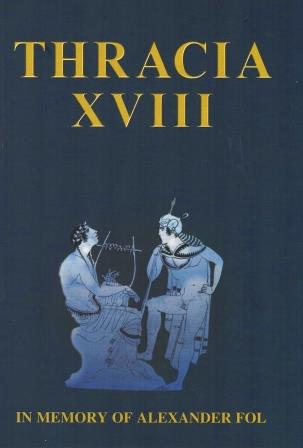
We kindly inform you that, as long as the subject affiliation of our 300.000+ articles is in progress, you might get unsufficient or no results on your third level or second level search. In this case, please broaden your search criteria.



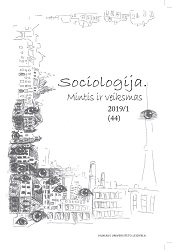
The article discusses the genesis of the political by treating this phenomena as a distinctive interaction between political and religious factors. The aim is to carry out the reconstruction of the premises of the political of ancient Greeks, by distinguishing its particular historic development features, exclusively characteristic for the Ancient Greece context. The rites of passage of Greek social communities are analyzed in order to understand why its youth initiation structure, formed during the Greek Dark Ages, became the basic model for Western Civilisation. The role of youth groups, the phenomena of Greek heroes, the educational structure of the young soldier class (ephebeia), and the first ever political revolution, initiated by Lycurgus, are examined by reconstructing the genealogy of the political.
More...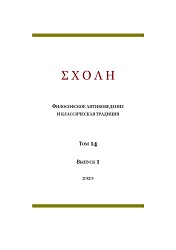
The paper tests the methodology of architectural and ethnographic research of the object of material culture-a masterpiece of world architecture of the Roman Pantheon. The method involves performing the proportional-metrological analysis of the forms using the results of three-dimensional laser scanning. The sequence of actions allowing receiving extremely reliable dimensional drawings of necessary elements of an architectural monument is presented. The analysis suggests that the design metrological module of the Pantheon was a Roman foot of 0.445 m. A detailed analysis of the size of the rotunda plan made it possible to confirm the hypothesis that the design was based on the use of an integer analogue of the number "PI" - fraction 22/7. In addition, an integer right triangle 5: 12: 13 could be used to construct the right angle and to determine the basic proportions of the elements of the facade of the portico. Apparently, in the process of designing the forms of the Pantheon, the method of harmonizing elements on the basis of the similarity method with a change in their scale was used
More...
In the paper, several well-known passages from the Epistles of the Apostle Paul are studied that raise the women’s issue in Corinth and still cause many discrepancies and contradictory assessments from masculine bias and chauvinism in early Christian preaching to St Paul’s personal misogyny. The author shows that these places should be interpreted as a continuation of the Corinthian sermons of the Apostle, deliberately composed by Paul in the context of non-Christian Greco-Roman culture of Corinth revived by Julius Cæsar. At the heart of this Corinthian culture, there was the famous temple of Aphrodite, sacred prostitution and the exquisitely hedonistic hetæras society.
More...
Empedocles uses two forces to describe the world process, the emergence and destruction of space - Love and Strife, which work in turn, and in due time, replace each other. It is obvious that love is responsible for unification and creation, and hostility for division and destruction. At first glance it seems quite natural that it is the power of unification that Empedocles calls Aphrodite. However, when you look closely at the fragments of the poem, the image of Aphrodite is not so unambiguous: she acts as a god-craftsman, that is, not just watches from afar as the roots of things are connected to each other, but mixes them with her own hands and is directly involved in the creation of living beings. We meet her involved in such activities as metal casting, pottery, and artwork. This naturally leads to the question from where did she get so many different functions? To answer this question, one should turn to literary sources about Aphrodite both before and after Empedocles’ life (in the context of Homer’s epos and Hesiod’s poem), consider the religious tradition of Cyprus and especially the East, neighboring Greece, from where, in the opinion of some scientists, the goddess could get into the Mediterranean cultural landscape (most important study here is the work by Nano Marinatos), to study archaeological data and findings related to Aphrodite. Taking into account Empedocles’ interest to bloodless sacrifices I will try to tie his views with the later orphic tradition. At the same time, in order to protect myself from losing the way in the forest of such huge massif it is necessary to restrict the area of this study. I will concentrate only on the activities of Aphrodite as she is presented in Empedocles.
More...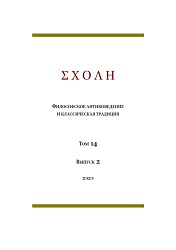
After the dissolution of the Empire of Alexander of Macedon the layer of Hellenized aristocracy began to appear in Asia under the influence of mixed marriages and cultural syncretism. The announcement of the establishment of the independent state of Bactria made by Diodotus I triggered the appearance of a special culture, characterized by the mixture of Iranian, North Indian and Greek cultural elements. Ultimately, its sub-sequent spread to the East lead to influence on the China-dominated world. Based on all the mentioned above, the given article aspires to collect and analyze the data, primarily from narratives as sources and foreign literature, for the purpose of researching the processes that connected two ancient and very influential civilizations – Greece and China. The main stages of explicit and implicit relations between China and Hellenistic Bactria is defined. The role of nomad cultures in establishment of connections between West and East is determined and exemplified by the events of the 3rd century B.C. and the early 1st century B.C. Conditional character of the names, referred to nomad entities by ancient writers, is analyzed. We show the controversy of interpretation the given names with the ethnic groups in modern meaning as well as the range of sources on the relations between Greco-Bactrian Kingdom and China and their characteristics. Finally, we construe the equal role of nomads, Chinese and Hellenes in the described contacts of ancient societies.
More...
Heraclides of Pontus (c. 388–310 BCE), a Platonic philosopher, worked in various literary genres and wrote on such topics as psychology, politics, literature, history, geography, astronomy and the philosophy of nature. Nothing is preserved. The present publication contains a collection of the testimonies about Heraclides’ varied writings, dedicated to Greek cultural history, including literary and religious studies, and, in some details, musical history. The evidences are translated and numbered according to a new edition by Schütrumpf et al. 2008.
More...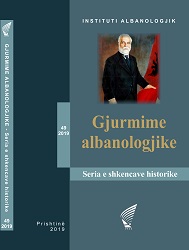
Among the ancient epigraphic monuments found from the late XIX century, during the XX century and the beginning of the XXI century in the Peja region, a large number of them belong to the votive monuments dedicated to various indigenous deities (Silvan), Roman deities (Jupiter, Mercury, Fortuna, Bonus Eventus and Genii) but also Greek (Aesculapios, Hygia, Telesporus, Heracles) and Egyptian (God Serapis and Goddes Isis). The monuments are mainly votive altars with a few exceptions such as the eagle-and God Heracles-Hercules tablets found in Peja, then the God Dionisios (Liber) tablets and their escorts found in the village of Vrellë and a base of statues of three deities found in Raushiq. Apart from the votive monuments found, it is possible that during antiquity in the Peja region there were also temples, cult places or shrines of various ancient deities: the Roman supreme god Jupiter, the deities Mercury and Aesculapius, and the Egyptian deities Serapis and Isis. In addition to the cults of deities mentioned in today's Peja region, there are also traces of ancient monotheistic beliefs, respectively Judeo-Christian and Early Christianity. Votive monuments have inscriptions with texts in Latin language, chronologically dating from the I to the end of the III century AD and they were made in a stone-masonry workshop near the site called “Gradina” in Peja within the settlement which apparently had the rank of Roman municipium.
More...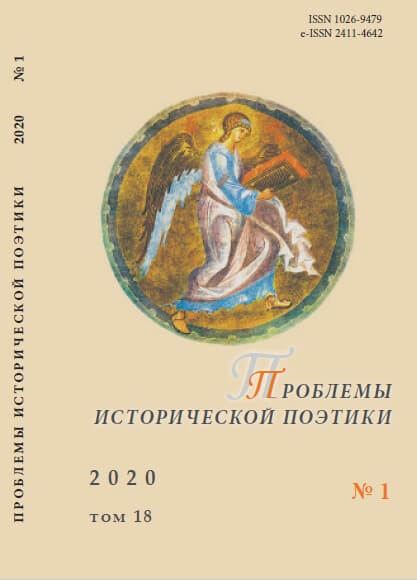
The subject of this paper is the transformation of the poetics of Cupid and Psyche plot in its national and historical modifications in European literature. The methodology of the analysis is based on mythological studies (A. N. Veselovsky, A. F. Losev) and genre studies (M. M. Bakhtin, S. S. Averintsev, E. M. Meletinsky, etc.). Allegorization of the images of Love and Soul appeared in the antiquity long before the novel by Apuleius “Asinus aureus” or “Metamorphoses” (the 2nd century AD). In a Greek epigram Eros is often associated with the element of fire that puts the soul — “Psycho” — to a variety of ordeals and tortures. In “Metamorphoses” by Apuleius the tale about Cupid and Psyche can be seen as an allegorical narration about the soul traveling around the world and looking for ways to Love and eternal life. Later, the parabolic core of the ancient story was enriched with new motifs from the arsenal of mythology, Neoplatonism and Christianity. The archetypical basis and platonic paradigm of the plot in “Metamorphoses” by Apuleius go together in a syncretic unity, that provides universality and polysemy of the different versions of tales about Cupid and Psyche in European literature. The neoplatonic version of the story, which interprets the reunion between Cupid and Psyche as the Union of God and Soul, is represented in literature by writings of Fulgentius, Boccaccio, Heine, Coleridge, Żuławski and others.
More...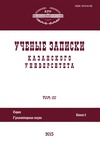
This historiographical paper discusses the causes of the Peloponnesian War as understood by W. Mitford, an English historian at the turn of the 18th – 19th centuries. His work “The History of Greece” was considered the most influential until the publication of “History of Greece” by G. Grote. It was found that W. Mitford’s interpretations were differently assessed in the 19th – 20th centuries: he was accused of political bias, praising Sparta, and criticizing democracy in general and the Athenian system of government in particular. The evidence that W. Mitford’s interpretations of the causes of the Peloponnesian War are based on the same objective factors as that ones introduced by modern scholars: not on his personal preferences or political views, but on the analysis of the political situation in Greek states based on the material interests of the political groups in democratic Athens imposing its rule to other Greek States in order to satisfy these interests.
More...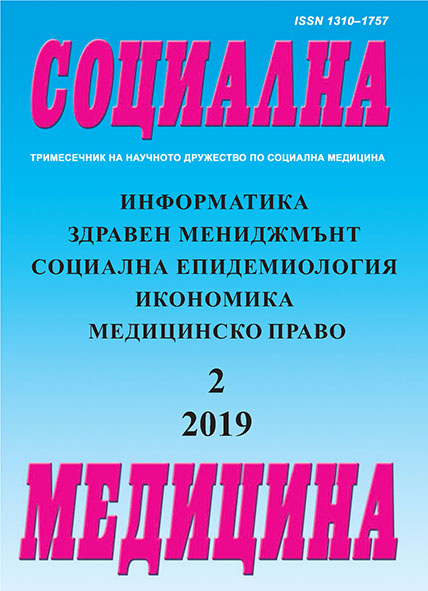
The article provides brief notes on the earliest known quarantine restrictions, about which we have reliable information. In addition to the well-known biblical texts that refer us to the 5th century BC, particular attention is paid to the actions of the Milanese and Dubrovnikan authorities from the 1370s, aiming at curbing the plague epidemic at that period. Brief information was also provided on the organization of other Western European quarantine isolators and infirmaries in the late 14th and 15th centuries.The second part of the article briefly presents the religious teachings of Islam that led to the development of a sense of fatalism among the Muslim population of the Ottoman Empire in the face of deadly epidemics, which made it a plague-infested nest for Europe. Particular attention is paid to the organization of the quarantine service of this empire in the late 30's and early 40's of the 19th century. Much of the story is devoted to the organization of the first quarantine posts and infirmaries in the Bulgarian lands, which was largely due to the pioneering efforts of the French physician Bruno Taron.
More...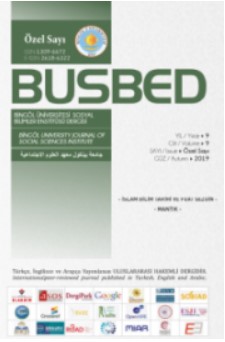
In ancient times, many scientists who raised ideas about astronomy in eastern and western societies were raised. The ideas of Ptolemy, one of these scientists, have been discussed for centuries by being close to the truth. Ptolemy's concept of astronomy based on mathematical elements was put forward in his Almagest. However, this understanding of astronomy had some shortcomings and flaws. Naturally, as time and science progress, these deficiencies and imperfections will be tried to be criticized and corrected. In the medieval Islamic world, Ptolemy's understanding of astronomy was adopted in accordance with centuries of tradition. However, in the Middle Ages, where the Islamic Renaissance took place, the deficiencies in this understanding and the reactions to the flaws were not delayed. These reactions began to manifest itself in succession in Andalusia, Egypt, Iraq, Iran and Anatolia. Deficiencies and flaws in Ptolemy's understanding of astronomy were first noticed by Ibn al- Haytham. Later, these deficiencies and flaws were expressed by the Abbasid scholars in Iraq and the Ilkhanid ulema in Meragah, and alternative astronomy and planetary models were proposed for the elimination of these defects. Undoubtedly, Ibn al-Haytham, Nasîrüddîn Tûsî, Kutbettîn Şirâzî, Mû’eyyededdîn ‘Urdî and İbnü’l Şatîr passed great efforts on this subject and the road to the Copernicus was opened.
More...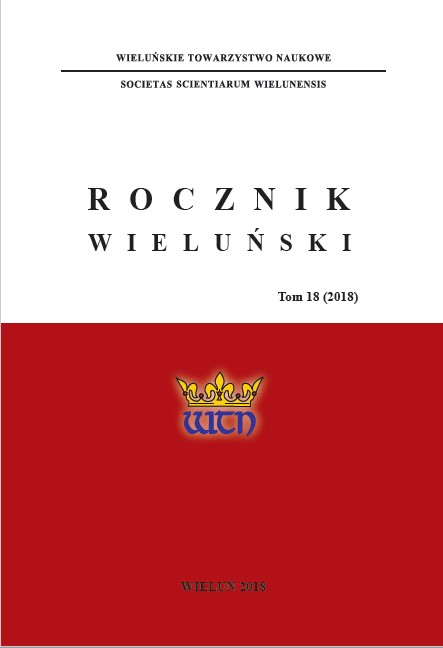
The article presents the problems of the Przeworsk culture from the younger pre-Roman period in the southern part of central Poland. It is based mainly on the results of archaeological excavations of burial grounds in Charłupia Mała, Siemiechów, Strobin, Konopnica, Niechmirów-Mała Wieś, on which materials from the early settlement phases of this cultural formation were found. They are determined by dress elements, especially fibulae of the middle-La Tène construction (varieties C, D/E, H after Kostrzewski) and the late-La Tène construction (varieties K, M, N, O), various categories of militaria (single-edged swords, shield bosses, shaft weapons’ heads) and imports from the Celtic (La Tène) zone, e.g. east-Celtic Novo mesto type helmet, two-edged swords with scabbards (e.g. types III, V after Bochnak) as well as knives with hilts ended with rings. As a result of this research, the appearance of the Przeworsk culture in the area in question should be expected already at the end of the A1 phase, however, its full development occurs only in the A2 phase and continues in the A3 phase of the younger pre-Roman period.
More...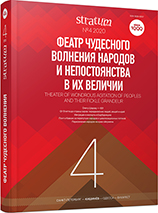
The article presents a complex of “stone circles” of various shapes, discovered in 1987 in the northwest of the Kola Peninsula, as well as the results of a preliminary survey of a concentric “circle” (the outer diameter of the ring is about 6 m). The closest analogies to these constructions are found in the antiquities of the Przeworsk and Velbark cultures (Poland), mainland and island Estonia, as well as in polar Norway. The summary dating of these analogies is wide from the Early Roman Time to the Migration Period (1st—5th/6th centuries). An iron D-shaped buckle and a knife with straight back found in a “circle” near the abandoned village of Pervomaisky can also speak about the European origin of this complex. Such a distant influence of the Baltic tradition upon Lapland can logically be explained only by fur trade, which was controlled by the militarized barbarians of German-Baltic, and possibly Finnish origin. The authors analyze the synchronous context of the horizon of connections between things and traditions, including the territory of the Russian north-west. Based on the available data, the dating of the presented complex is determined within the periods C3/D1–E1, i. e. 350/375—525. A more detailed conclusion is possible only after a thorough study of this complex of “circles”.
More...
This short paper publishes a small fragment of Roman military diploma discovered in the territory of Drobeta, at Izvoarele, and republished another small fragment of a diploma found at Gîrla Mare (also in Mehedinţi county). The two fragments are copies of constitutions from the reign of Trajan, for the auxiliary units of Upper Moesia, respectively Dacia or Upper Moesia.
More...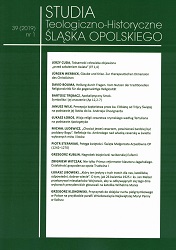
The review of: Szymon Drzyżdżyk. 2017. Chrystologia w perspektywie Mitu Trojańskiego. Kraków: Wydawnictwo „Scriptum”. 252 s. ISBN 978-83-65432-61-2.
More...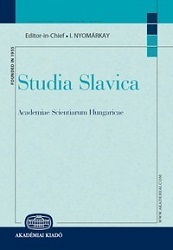
Was there a goddess Slava in Slavic pagan antiquity? Though there have been voices that it was possible, the analysis of Slavic folklore texts proved the issue to be more complex. The present paper shows that Ukrainian folklore as well as the folklore of other Slavic peoples may have preserved stable compositional clichés that can be traced back to Indo-European prototypes. In their turn, these clichés may be explained as the verbal reflections of ritual practices and sacred etiquette. It is stated that the final parts of Ukrainian dumas, Russian bylinas, and Serbian heroic songs that contain praise (slava) of natural forces can be regarded as remnants of pagan beliefs with strongly proved Indo-European background. The common motives of slava in different Slavic epic traditions give us important insights into the Slavic pagan religion. At the end of dumas, bylinas, and South Slavic heroic songs, there is a distinct part in which the singer, apart from the main story, blesses the audience and the universe. This part had preserved the composition scheme comparable to that of Old Indian stuti hymns, Pindaric, and Vedic poetry: 1) an invocation to the deity or a person with higher social rank; 2) a recounting of the previous (semi)mythological precedent; 3) a request. The obligatory lexical element of the final part of Slavic eposes is slava. As it is mentioned in the context of mourning over the dead or calming the natural forces, it is very likely that the concept was connected to the cult of ancestors and natural forces – one of the most archaic forms of religion. It is proved by two non-neighbouring cognate folklore sources. In Hutsul funerals up to the beginning of the 20th century, slava used to serve as a taboo name of the soul of the deceased. Meanwhile, at least up to 19th century, the Serbs preserved the holiday of slava that is interwoven with the cult of the dead (e.g., kolyvo was eaten during the rite). Thus, though we cannot claim the existence of the personified goddess named Slava, we have strong evidence about the notion of slava (praise, fame) that could have been current in Common Slavic religion. It is even more likely due to the underlying Indo-European tradition, in which the notion of fame was not personified though crucial for the ideology of warring elites (like in Pindar’s lyric). Such evasive notion of slava that was not always personified though praised comforts very well to the picture of ancient Slavic religion handed down to us by Procopius of Caesarea. He claimed that ancient Slavs praised natural forces, rivers, and forests. Likewise, in the fragments preserved in some of Ukrainian dumas and songs from Kirsha Danilov’s collection, the praise (slava) was sung not only to the heroes but also to rivers and fields.
More...
The facts of Gogol’s appeal to the models of classical forms of myth and ritual are interesting not only by themselves but also in the aspect of their relationship with the arsenal of Christian mythology. The fundamental point here is that in light of the historical interpretation of the myth and the Revelation by F. W. J. Schelling, the mythology since its initial stage organically developed to Christianity, to the truths of Revelation (as the historical movement “flowed” into them). The symbolic complex of the story Vij, interlacing with Eros and Thanatos, allows parallels to the myth of Orpheus and Eurydice since in the case of the story Vij and in the case of myth, the motive of prohibition on sight also holds. The philosopher (i.e. the poet in the archaic and romantic notion) Homa Brut comes into contact with the world of death not of his own free will, besides, the panicle Eurydice died because of him. Orpheus partakes of the Dionysian sacraments. A visit to Orpheus of hell equated him, in Christian understanding, with Christ. In Gogol’s story Vij, Dionysus and Christ have implicitly come together. The motive of the story Vij for blindness is related to Oedipus’s self-blindness motive. Mythological Erinnes, persecuted by Oedipus, are old women, which correlates with one of the chthonic incarnations of the plaque, thereby drawing closer to the goddesses of revenge, punishment, and remorse of conscience. The fact of the final recognition of Oedipus as “holy” is reflected in the potential Christian semantics of the image of Homa as a martyr and passion-bearer. As the winner of the witch, the deliverer of people from her misfortunes and the passion bearer Homa is a Christian ascetic. Against the background of Christian parallels, the second stay of Homa on the farm becomes as if his “second coming”, symbolically comparable to the expected second coming of Christ, who is coming all the time. The terrible glance of Vij and pannochka certainly reminds of the slaying glance of Medusa Gorgon, which forced all living things to petrify. There is pathos of fighting tyranny in ridding the farm from the witch by Homa. Although Homa defends himself first of all in the beating scene, the general social meaning of his action is obvious. The power of the pannochka (she is the daughter of a wealthy sotnik), who for some reason considers himself pious, is not only socio-political but, in the main, existential-anthropological, this domination over man as a species, over man as such. The motives of ancient Greek and in general pagan mythology are closely intertwined in Gogol’s story with Christian motives, which formed the unique spiritual and aesthetic synthesis of the story Vij.
More...